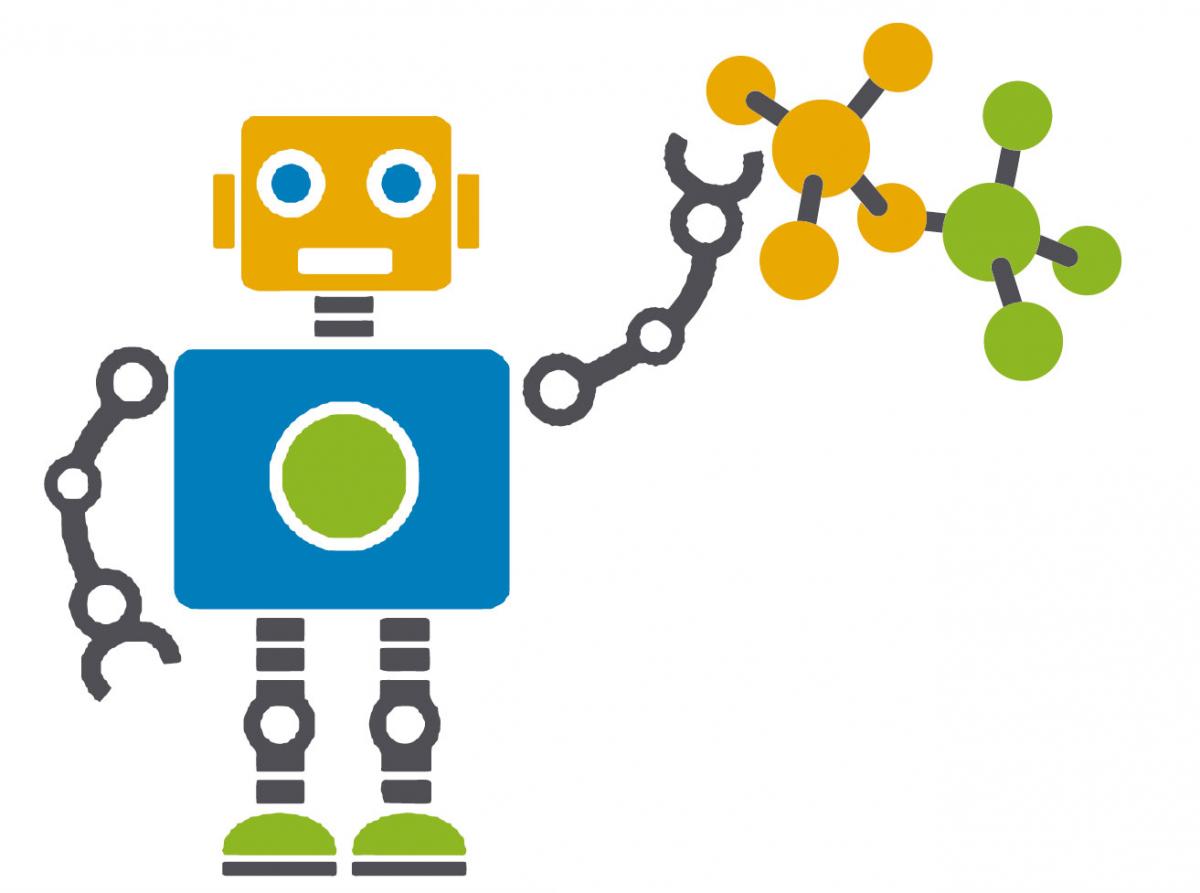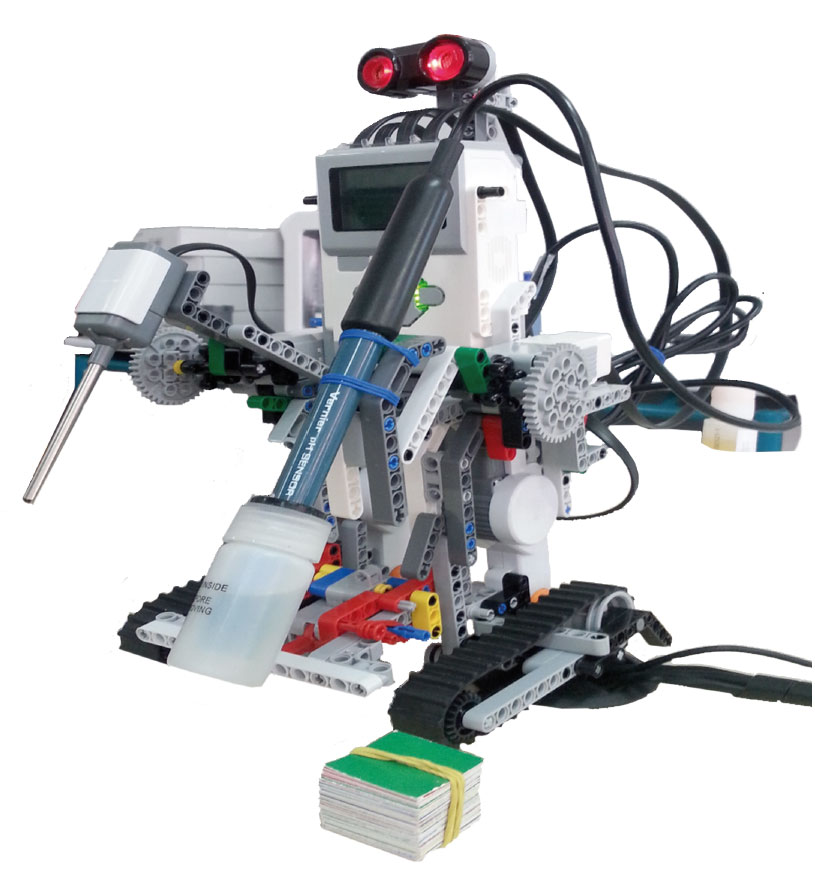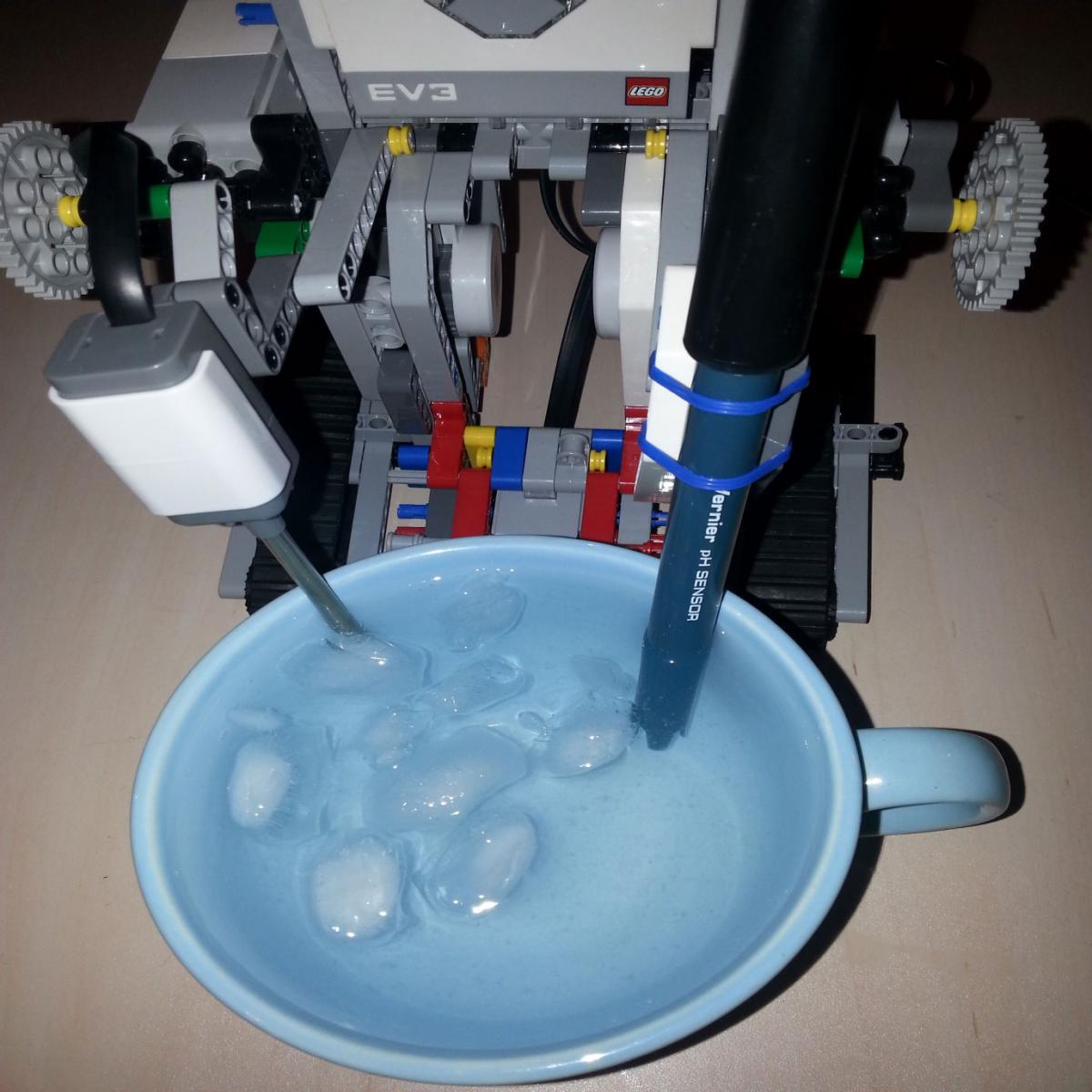Chembot: chemistry with robots Teach article
We know that robots are good for mechanical tasks – but here’s a chemistry project for robots that don’t mind getting their sensors wet.
What’s the best way to make a connection between robotics and the school science curriculum? This is the challenge we set ourselves in developing Chembot – a robot that does simple chemistry experiments.
We were inspired to develop this activity because, as computer science teachers, we wanted to make a link to other branches of science – in this case, chemistry. So we set students the challenge of building a robot to answer this question: does the pH of a liquid change with temperature, or does it stay the same?
In this article, we describe the practical details of the Chembot activity, which needs around six teaching hours to complete and is suitable for senior high-school science students (age 16-19) with a basic knowledge of programming. Chembot also works well as an extracurricular activity, perhaps with the school’s robotics club.

Setting up the challenge
This project is all about thinking and working collaboratively. The students build the robots themselves using Lego Mindstorms robotics kits, and then equip them with suitable sensors to measure the temperature and pH of a liquid.
To help students develop and refine their initial ideas about how to approach the challenge, you can use a three-step, increasingly collaborative process:
- Think: Students think independently about how to proceed, forming ideas of their own.
- Pair: Students discuss their thoughts in pairs. This step allows students to articulate their ideas and to consider those of another person.
- Share: Student groups share their ideas with a larger group, such as the whole class. Often students are more comfortable presenting ideas to a group with the support of a partner (from step 2).
To succeed in the challenge, the students also need to solve three problems in sequence:
- How should the sensor and robot electronics be integrated to work together?
- How will the robot manage to immerse the sensors into the liquid to take a measurement?
- What do the results say about the relationship (if any) between the temperature of a liquid and its pH?
Materials

complete with sensors.
Image courtesy of Eleftheria
Karagiorgou and Vasileios
Spahos
For each small group (e.g. four students), you will need:
- Lego Mindstorms EV3 kit
- Lego Mindstorms EV3 software (free to download if you have a Lego account)
- pH meter and adaptor, e.g. those made by Vernier
- Lego EV3 temperature sensor
- Computer, to write the code for the programmable robots
- Liquids at room temperature: water, plus (optional) vinegar or Coca-Cola
- Large bowl
- Ice cubes or water heater (use both for a larger range of data)
Procedure
The activity consists of five phases.
Phase 1: Introduction
Duration: 30 min
First, discuss the following chemistry topics as a class:
- The theory of acidity and the definition of pH as a measure of the concentration of hydrogen ions in a liquid
- pH meters and the pH scale (the lower the pH, the greater the acidity)
- The challenge: to build a robot that can measure pH and temperature
- The experiment: what data to collect and how to analyse the results
Then divide the students into small groups so they can start thinking critically about their construction plans and the elements needed.
Phase 2: Constructing the robots
Duration: 2 hours 30 min
This phase is carried out with the students in their groups of four.
The students build the basic robots using the Lego EV3 kits, then add the pH meters and temperature sensors to create the Chembots.
To make a Chembot, students need to make decisions about:
- Robot morphology – what materials to use, what the robot will look like
- Robot parts – which items from the EV3 kits to use
Phase 3: Programming and testing the robot
Duration: 1 hour 30 min
Working in groups, the students then programme their robots to carry out the temperature and pH measurements using the programming environment of Lego EV3, which is user-friendly and based on blocks. Each block represents a specific function. For example, one of the basic functions is the movement of the gears on the motors to control the sensors.
Once students think they have a working robot, they test it to resolve any remaining problems and challenges. This means ensuring that the sensors are working, the gears on the motors function well, the programming of the robot is correct, the construction of the robot is robust, and so on.
This is the most important and challenging phase – not only for the students but also for the teachers, who need to check that all the students understand what the aim of the project is and to help them with any problems they encounter.

sensors into cold water to
takemeasurements of
temperature and pH.
Image courtesy of Eleftheria
Karagiorgou and Vasileios
Spahos
Phase 4: Performance and adjustments
Duration: 1 hour
Each group takes a turn using their Chembot to take measurements. You can set up a testing desk in the laboratory with bowls containing the different liquids. To obtain water at different temperatures, put water at about room temperature (25 ˚C) into a bowl. Cool it gradually by adding ice cubes or heat it using the water heater, repeating the process for each group.
The students then use their Chembots to measure temperature and pH, reading the results from the EV3 screen of the robot and recording them.
Students should analyse their results and try to answer the initial question: what (if any) is the relationship between the temperature of water and its pH? Each group should produce a graph showing their results (this can be done using Excel), as well as their answer to the main question, and any information gathered about the pH of the other liquids.
Phase 5: Results and discussion
Duration: 30 min
Finally, the results are discussed as a class. Can the students use their understanding of acids and pH to explain their results?
They should have found that there is a relationship between the temperature of water and its pH: the higher the temperature, the lower the pH. So why is this?
The pH scale represents the concentration of hydrogen (H+) ions in a liquid. But it is the inverse logarithm (to base 10) of the concentration – so the more hydrogen ions there are, the lower the pH.
For example, at 25 ˚C, the concentration of H+ ions in pure water is 10-7, so its inverse log is 7, and thus the pH is 7. As the temperature of water rises, the number of molecules that are dissociated into H+ and OH– ions increases.
H2O ⇌ H+ + OH–
The dissociation process happens to more molecules at higher temperatures, so there will be a higher number of H+ ions – and the pH will fall. For example, at around 50 ˚C, the concentration of H+ ions is about 10-6 (which is ten times larger than 10-7), so its inverse log is 6 and its pH is 6. If the temperature of the water falls, the opposite happens: the concentration of hydrogen ions falls, so the pH increases.
You might like to challenge the students with this question: does the decrease in pH mean that the acidity of water increases with temperature? In fact, this is not the case: for each H+ ion there is still an OH– ion, so the water is still neutral. For a liquid to be acidic, it must have an excess of H+ ions.
End note
At the end of the project, we asked students to complete a short questionnaire about the project. All of our students appreciated this attempt to create an interdisciplinary hands-on activity in the classroom – in fact, they would like this to happen more often in STEM curriculum subjects.
The students also gained an important insight from this project, beyond the details of robotics and chemistry: every field of science is not autonomous, but is connected to other sciences “like links in a chain”, as one student aptly commented.
Acknowledgements
This project was one of the seven finalists in the Inspiring Science Education Scenario Competition 2015-2016, and was presented in the Inspiring Science Conference 2016 in Athens, Greece.
Resources
- For information on the full educational context of this project (Programming with Robots), visit the Inspiring Science Education (ISE) repository.
Review
Teaching any science using only standard manual equipment gives students a false impression of what doing science in today’s technological world really means. Chembot empowers learners to investigate a scientific question and simultaneously build the robotics needed to collect data. It takes an abstract concept such as pH and encourages learners to find out its meaning by investigating how it varies with another factor, in this case, temperature.
This project serves to show learners that doing science requires perseverance and imagination. Students follow the scientific method to reach conclusions of a valid research question. At the same time, the learning activity takes an inquiry-based and constructivist approach to investigating a scientific concept. Furthermore, students use critical thinking skills to develop the best design for the Chembot and troubleshoot along the way by sharing solutions with their peers and supervisors.
Chembot, which was shortlisted for the Inspiring Scientists competition, also aims to encourage creativity, a characteristic that is much needed in scientific jobs. It shows learners that knowing, understanding and applying scientific knowledge is not enough in today’s world. Innovation and entrepreneurship are key to success in this field, and computer science is an area of expertise which sustains these skills.
This competition entry demonstrates that the more cross-curricular links are made with other sciences, including computer science, and to problem-solving scenarios, the more effective our role as educators is in preparing our students to work in a scientific or technical field.
Angela Charles, Malta
